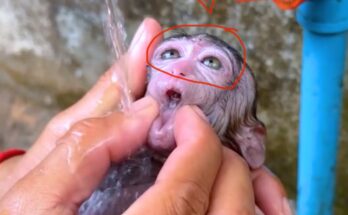Caring for a newborn monkey is a delicate responsibility that requires precision, patience, and a solid understanding of proper nutrition. Whether the infant was orphaned, rejected by its mother, or rescued, ensuring the correct amount and type of milk is essential for healthy growth. While exact feeding quantities can vary depending on the species, size, and health condition of the baby, general guidelines can help caregivers provide the safest and most appropriate care.
Understanding the Nutritional Needs of Newborn Monkeys
Newborn monkeys, like human infants, depend entirely on milk during the earliest phase of life. Their digestive systems are sensitive, and the wrong type or amount of milk can lead to digestive distress, dehydration, or malnutrition. Ideally, newborn monkeys should receive their mother’s milk. However, when this isn’t possible, a specialized primate milk replacer formulated for infant monkeys is the safest alternative. Cow’s milk and goat’s milk are not nutritionally complete for primates and may cause severe digestive issues.
General Feeding Guidelines
While different species—such as macaques, marmosets, capuchins, and vervets—have slightly different requirements, most newborn monkeys fall within similar feeding ranges in the first few weeks of life. A common guideline used by primate caregivers is:
A newborn monkey should typically receive 10–15% of its body weight in milk per day.
For example, if a newborn monkey weighs 100 grams, its daily total milk intake should be around 10–15 milliliters divided into multiple feedings.
Breakdown by Age
1. First Week (0–7 days)
-
Feedings: Every 2–3 hours, including nighttime
-
Amount per feeding: Usually 1–3 ml depending on body weight
-
Total per day: Approximately 10–15% of body weight in ml
Newborns have very small stomachs, so frequent small feedings are essential.
2. Weeks 2–4
-
Feedings: Every 3–4 hours
-
Amount per feeding: 3–5 ml or slightly more as tolerated
-
Signs of healthy feeding: Steady weight gain and active sucking reflex
3. One Month and Beyond
-
Feedings: Every 4 hours
-
Amount per feeding: 5–10 ml depending on species and weight
-
Introduction of soft foods begins later, usually after 6–8 weeks, depending on species.
How to Feed a Newborn Monkey Safely
Feeding techniques are just as important as the amount of milk given. Caregivers should:
-
Use a small syringe or a specialized nursing bottle with a soft nipple.
-
Hold the infant upright to prevent aspiration.
-
Warm the milk replacer to body temperature.
-
Avoid overfeeding, which can cause bloating or diarrhea.
-
Weigh the baby daily to track growth and adjust feeding amounts as needed.
When to Seek Veterinary Guidance
Any newborn monkey showing signs of lethargy, bloating, diarrhea, vomiting, or refusal to feed requires immediate veterinary attention. Exotic animal veterinarians or primate rehabilitation specialists can provide species-specific feeding schedules and monitor health.
Final Thoughts
Feeding a newborn monkey is a delicate process that must be approached with accuracy and compassion. While 10–15% of body weight per day is a useful guideline, every infant is unique. Working closely with a qualified wildlife rehabilitator or exotic animal veterinarian ensures the best start for the young monkey’s life. Proper nutrition during these early days sets the foundation for strong, healthy development in the months ahead.



